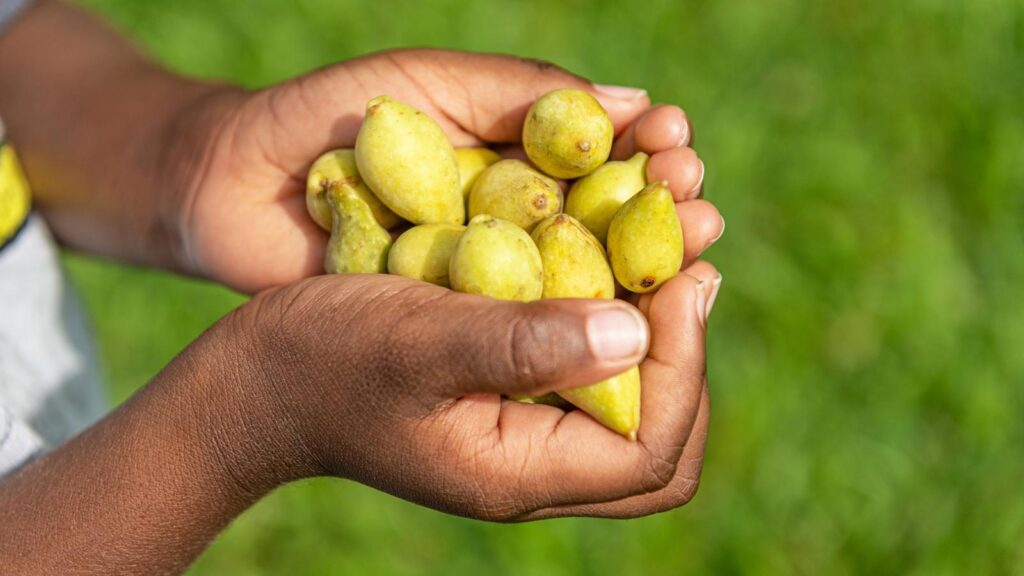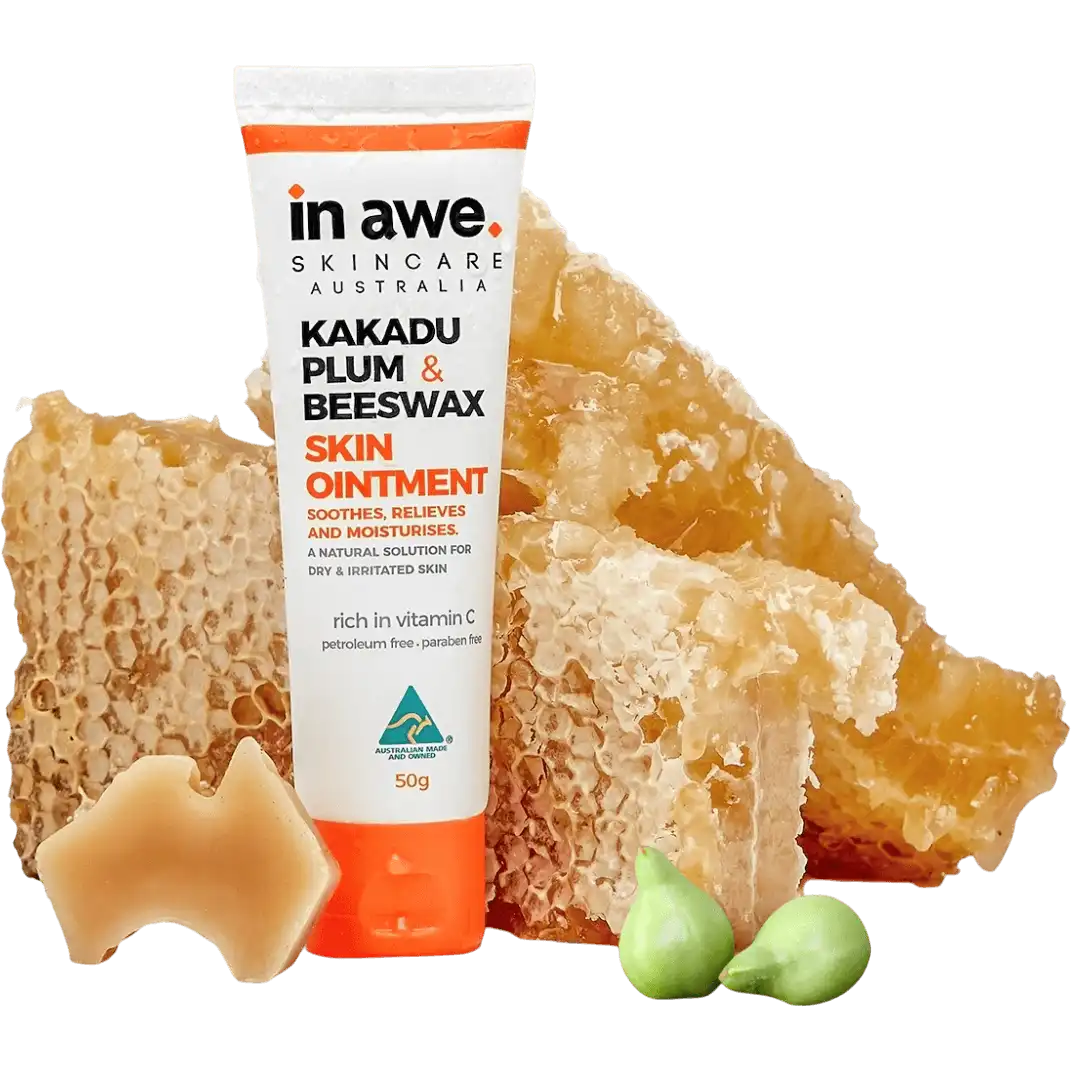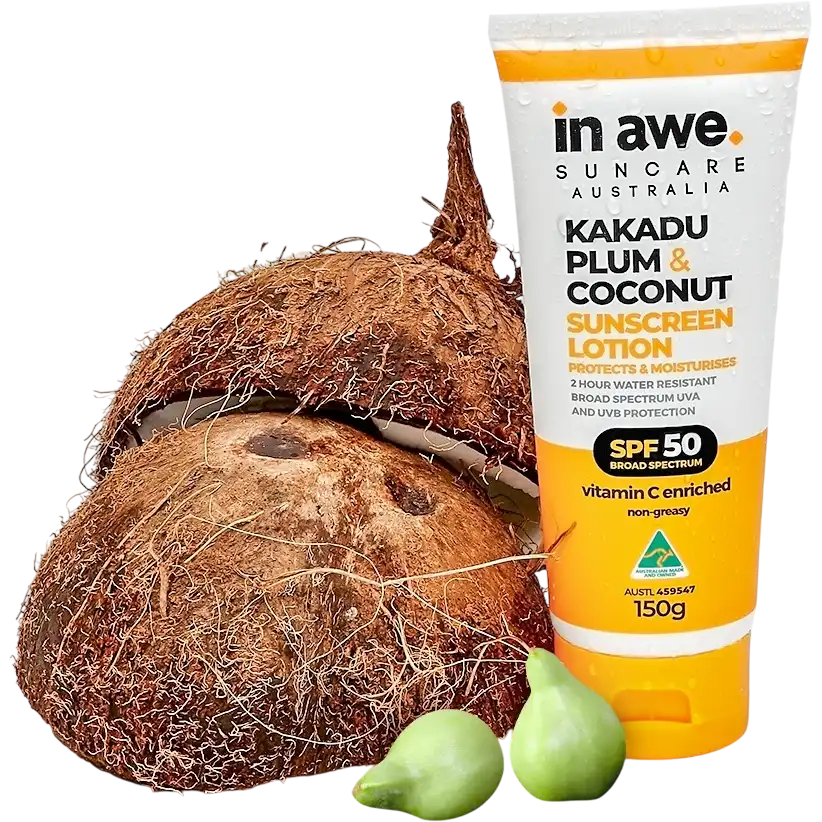
In Awe; Enriched with history
The power behind In Awe’s skincare products lies in the Australian superfruit known as the Kakadu plum.
While this fleshy fruit – known by the scientific name of terminalia ferdinandiana – has only more recently become a household name, the nation’s Aboriginal people have known of its nutritional and therapeutic potency for thousands of years.
Powerful bush medicine
An important food source, the Kakadu plum is also embraced to help treat colds and flu, as well as headaches. Additionally, the small deciduous tree’s bark is used as an antiseptic to manage sores and mosquito bites.
Research has now shown the Kakadu plum – also called gubinge, billy goat plum, green plum, salty plum, malak malak and elu and more – is known to be extremely high in vitamin C. In fact, it’s the world’s highest known source of it.
Scientists have also confirmed the traditional bush medicine is full of anti-inflammatory phytonutrients, folate (vitamin B9), calcium, magnesium, vitamin E, zinc, iron and leutin, a carotenoid with strong antioxidant properties. No wonder it’s a potent healer!
Where to find it
Kakadu plums are native to Australia’s Northern Territory and also grow in the Kimberley, in the far north of Western Australia.
In the Northern Territory, the trees are more commonly found in open tropical woodlands. In WA, they’re dotted along the coast of the Kimberley region.
This power-packed wild fruit normally begins to ripen in the NT in March, toward the end of Kudjewk (monsoon season) and continues throughout Bangkerreng (storm season) in April and the start of Yekke, a cooler but still humid season. In WA, it’s usually ready to pick from January.
Today’s uses
The Kakadu plum’s sensationally high vitamin C levels were discovered in the 1980s. Given vitamin C’s crucial role in skin growth and repair, it’s now becoming more popular in skincare products. It’s also used in hair products and as a food preservative.
Science has also now revealed the botanical powerhouse also boasts antioxidant properties that help prevent or delay cell damage.
With such potency, the use of the Kakadu plum will likely become even more widespread in the years ahead.
Celebrating NAIDOC Week
Across Australia, the first week of July each year is reserved for NAIDOC Week.
This time celebrates and recognises the history, culture and achievements of Aboriginal and Torres Strait Islander peoples and is an important opportunity to learn about First Nations cultures, one of the oldest, continuous living cultures on earth.












